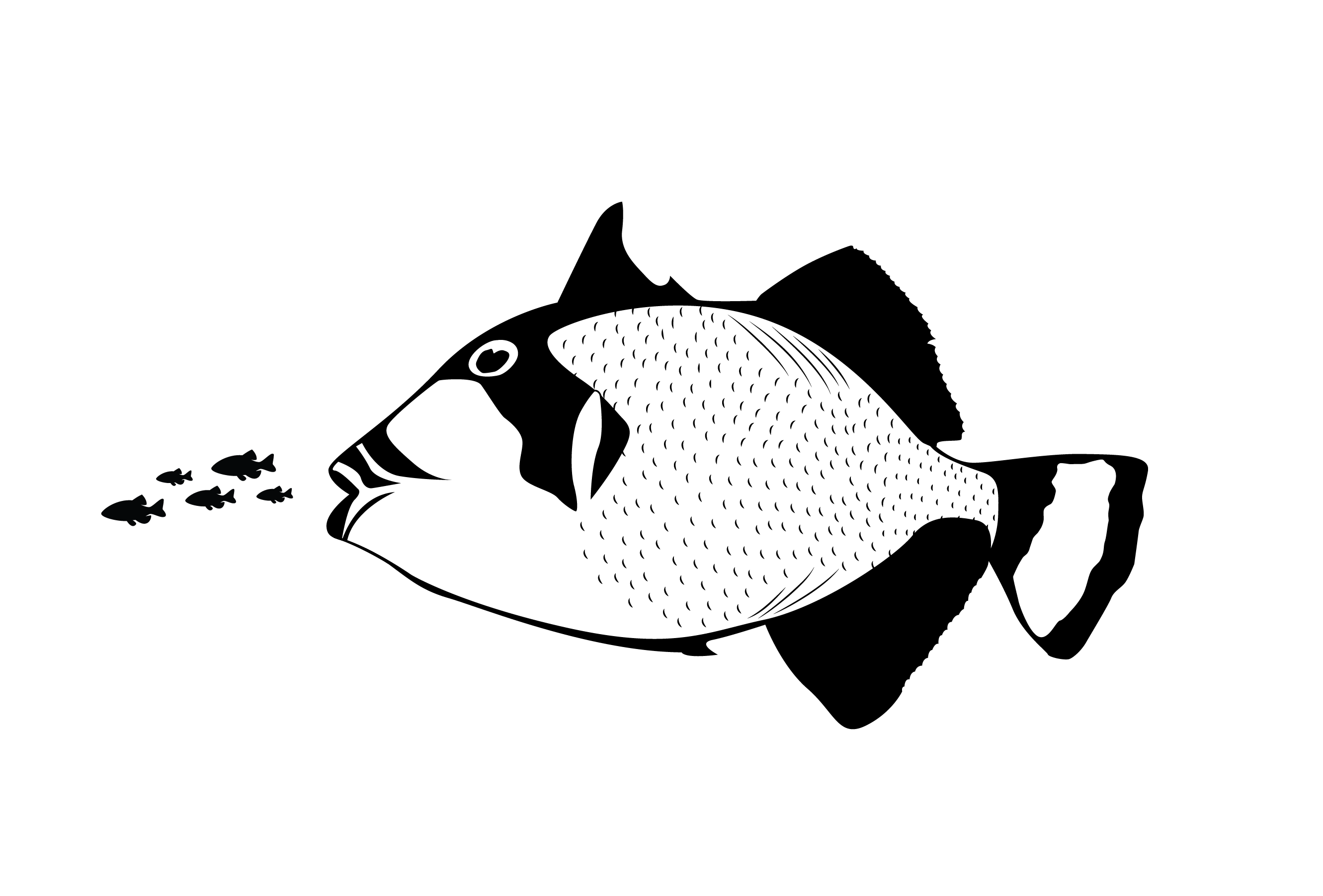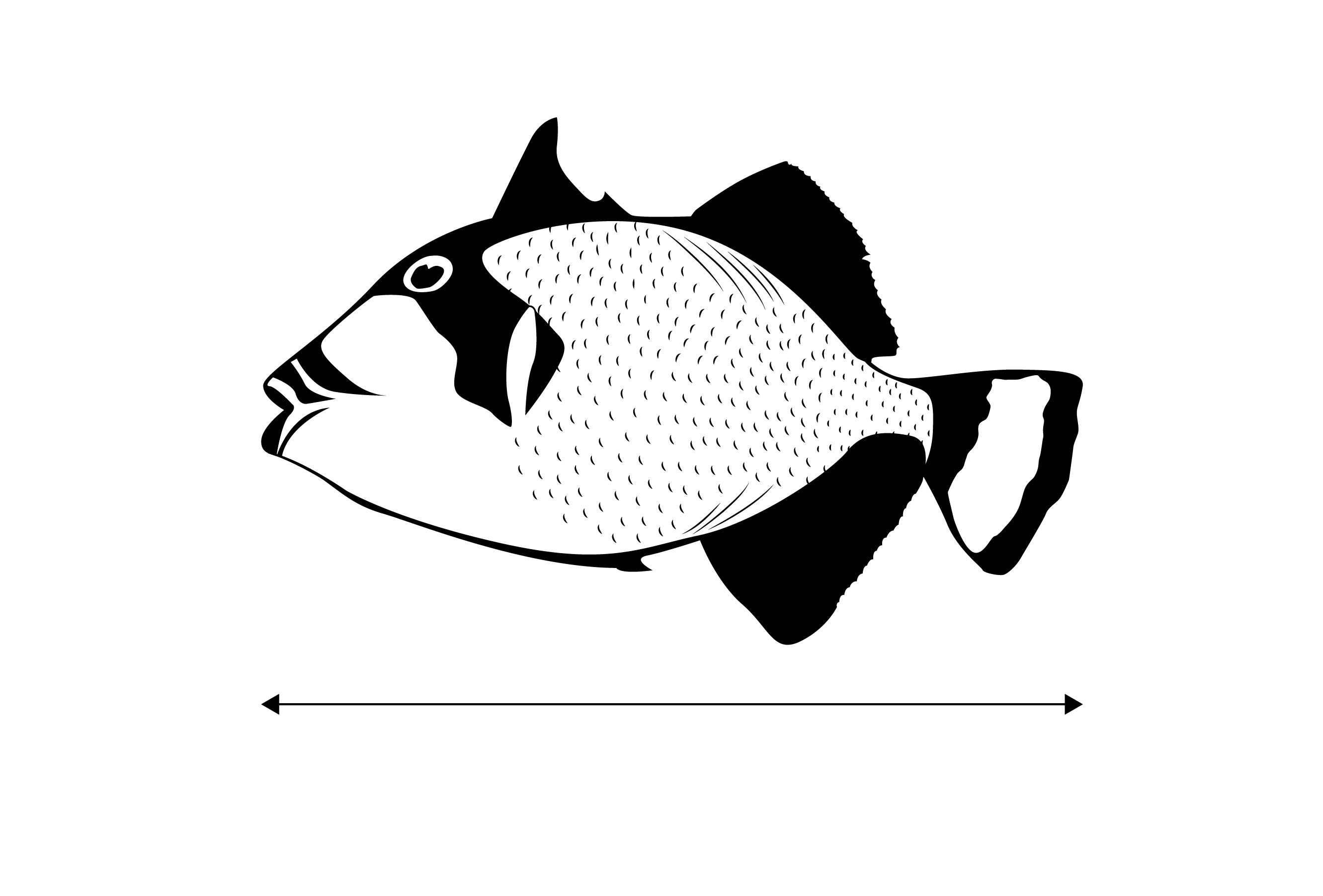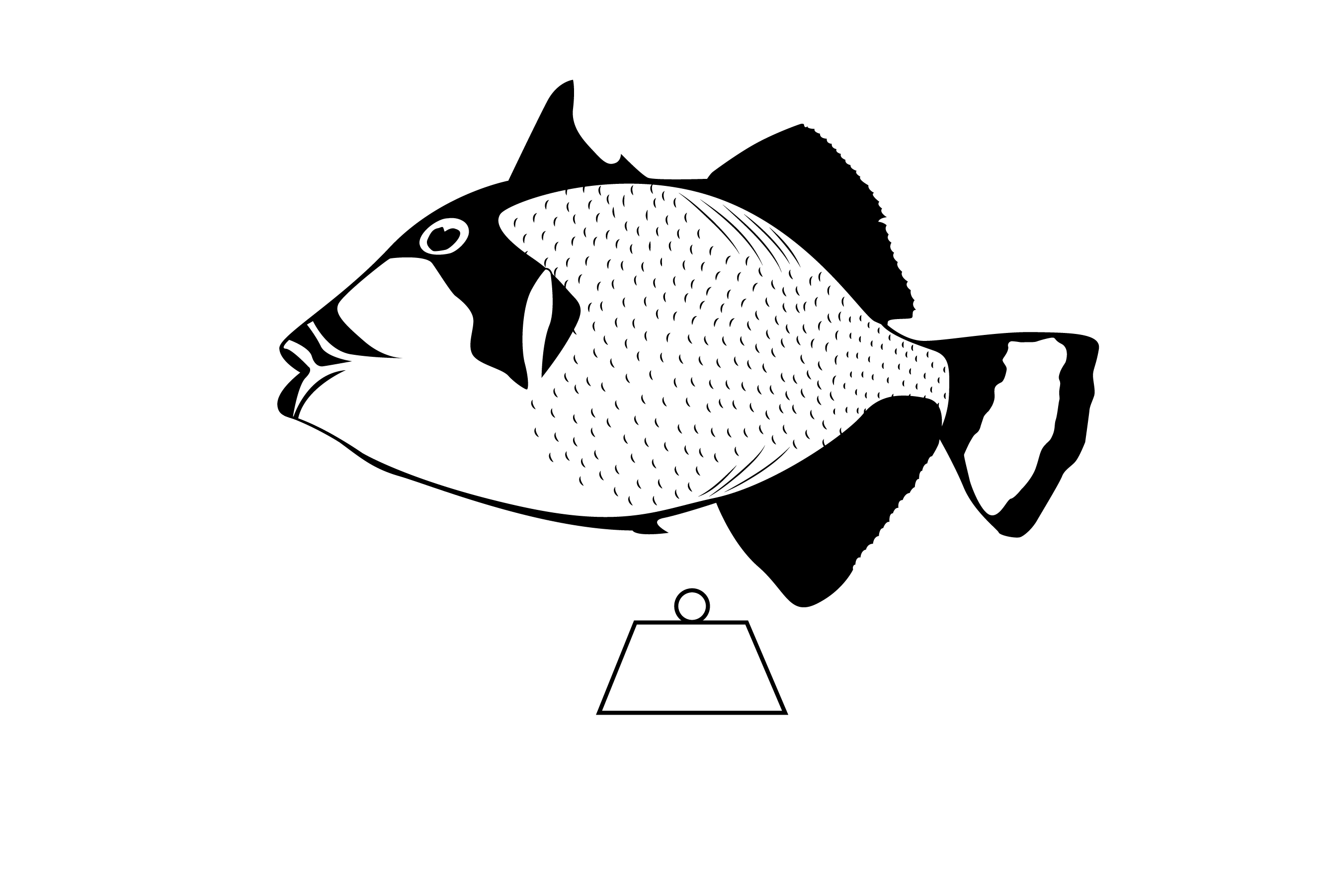When targeting these fish, you need to be accurate and, more importantly, subtle! Using an eight or nine weight rod will allow you to do this and also have enough backbone to pull these extremely hard fighters when needed. There are three flies that will always be in our guides’ fly boxes.

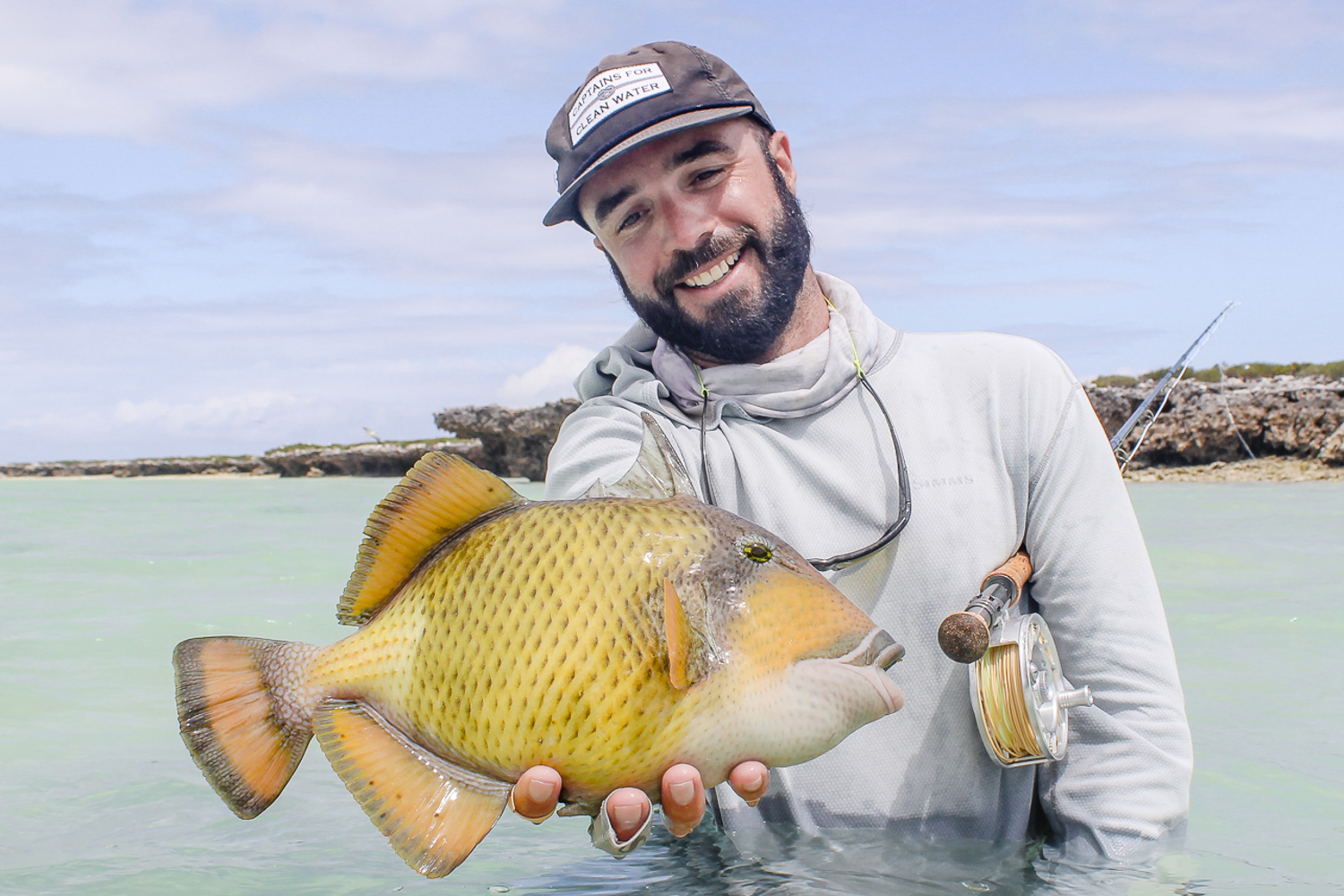
Triggerfish Fly Fishing
There are three main species of triggerfish at Alphonse Fishing Company destinations, all equal in beauty and challenge!
Moustache Triggerfish (Balistoides viridescens): Apropriately named as it boasts a very prominent dark line above the top lip. With its yellow body and orange fins edged with black lines it is the most commonly caught trigger.
Yellowmargin Triggerfish (Pseudobalistes flavimarginatus): An array of colours, it has a tan body with dark spots, orange margins in the fins, and a pinky-orange snout and cheeks.
Picasso Triggerfish (Rhinecanthus aculeatus): It may be the smallest out of the three but definitely tips the scale in the looks department with its striking yellow-lined lips, electric blue forehead, and black and white markings along the body.
The search for triggerfish
The type of triggerfish found in Seychelles prefers the shallow coral reefs and flats. The yellow margin triggerfish prefers sandy-bottomed areas close to patches of turtle grass and coral. It is also common to find a yellow margin close to a large coral “bommie” situated on a white sandy flat.
At the same time, both the moustache and Picasso triggerfish inhabit more reef-like bottoms filled with corals and seaweed.
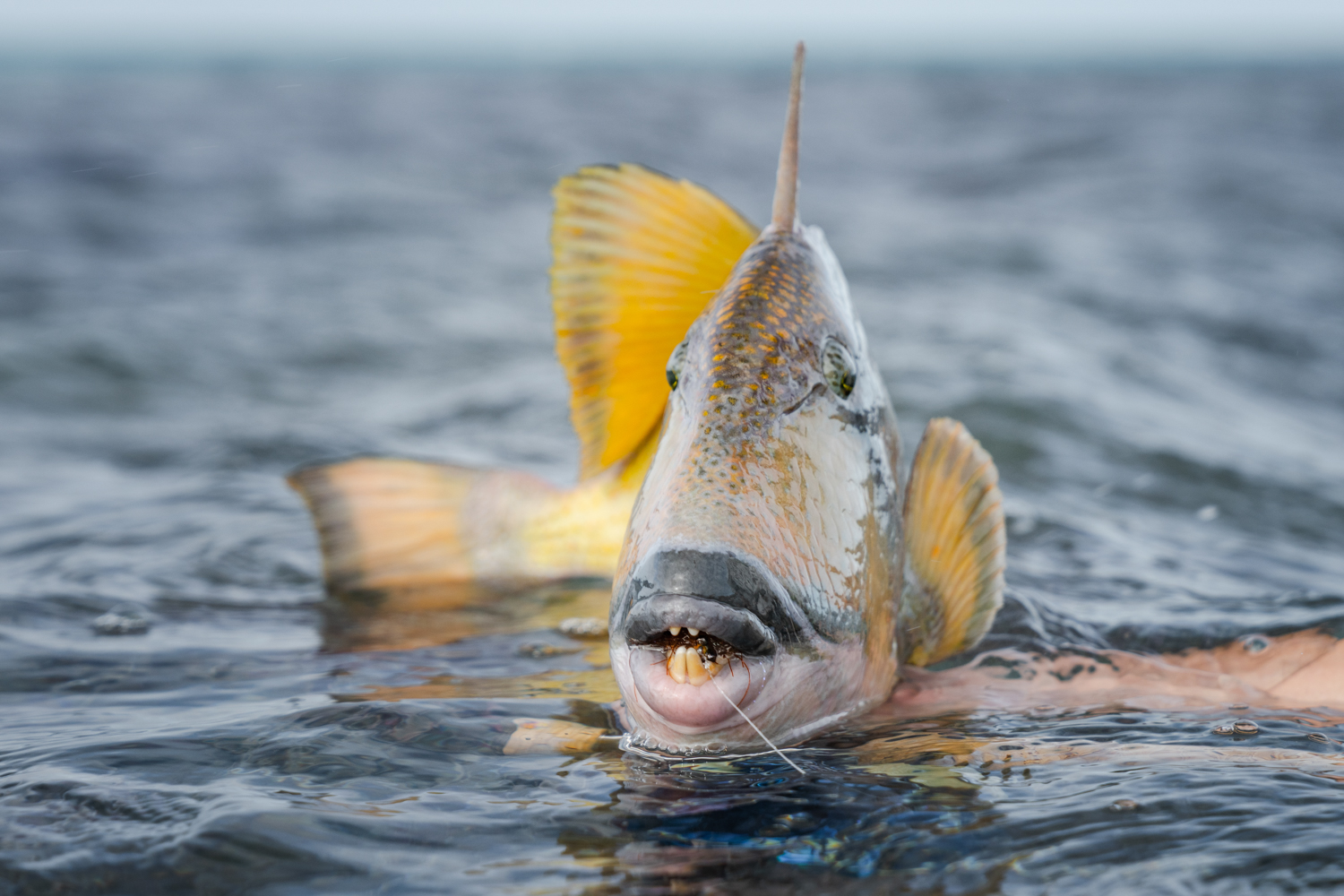
Best Triggerfish Rods & Flies
-
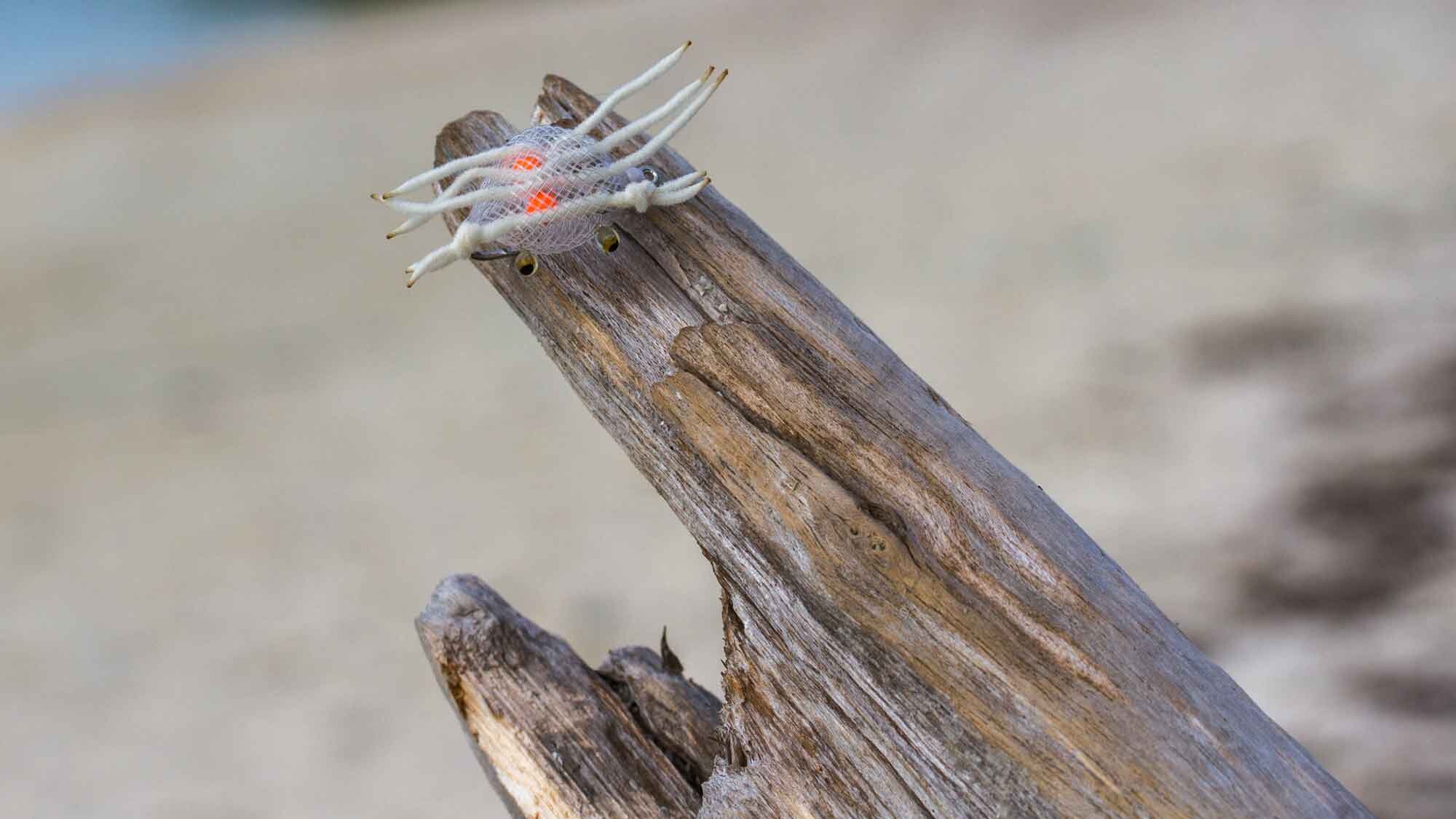
Alphlexo Crab Fly
The Alphlexo Crab Fly is a very realistic crab-like pattern. It also has a relatively solid and rigid structure to further fascinate the triggerfish once it has been pounced on. A general rule of thumb is to use olive or tan colours when fishing darker bottoms and white or lighter colours when fishing over sandy bottoms.
-
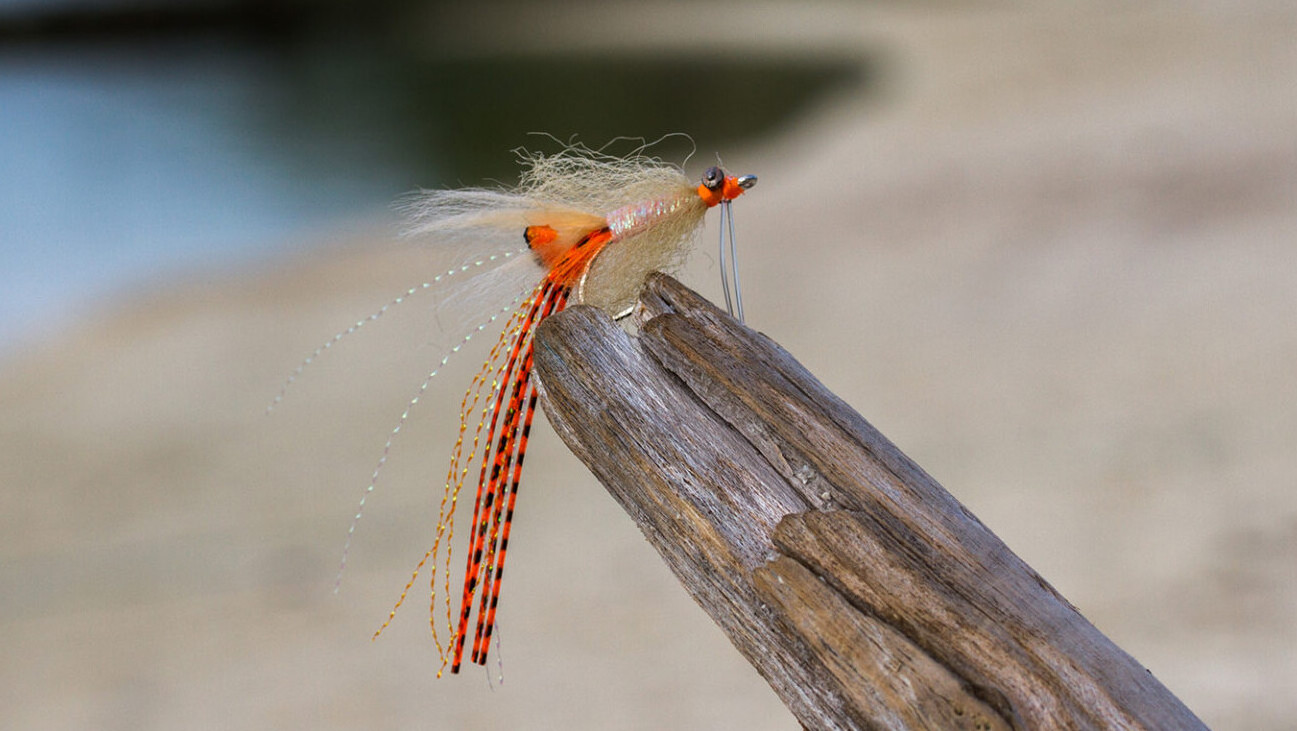
Spawning Shrimp Fly
The Spawning Shrimp fly has been around for ages for a reason – it works! It can be tied in various colours and weights. A Spawning Shrimp tied with lightweight bead chain eyes is ideal for super shallow tailing triggers. This also makes for a more delicate presentation when targeting these skittish fish.
-
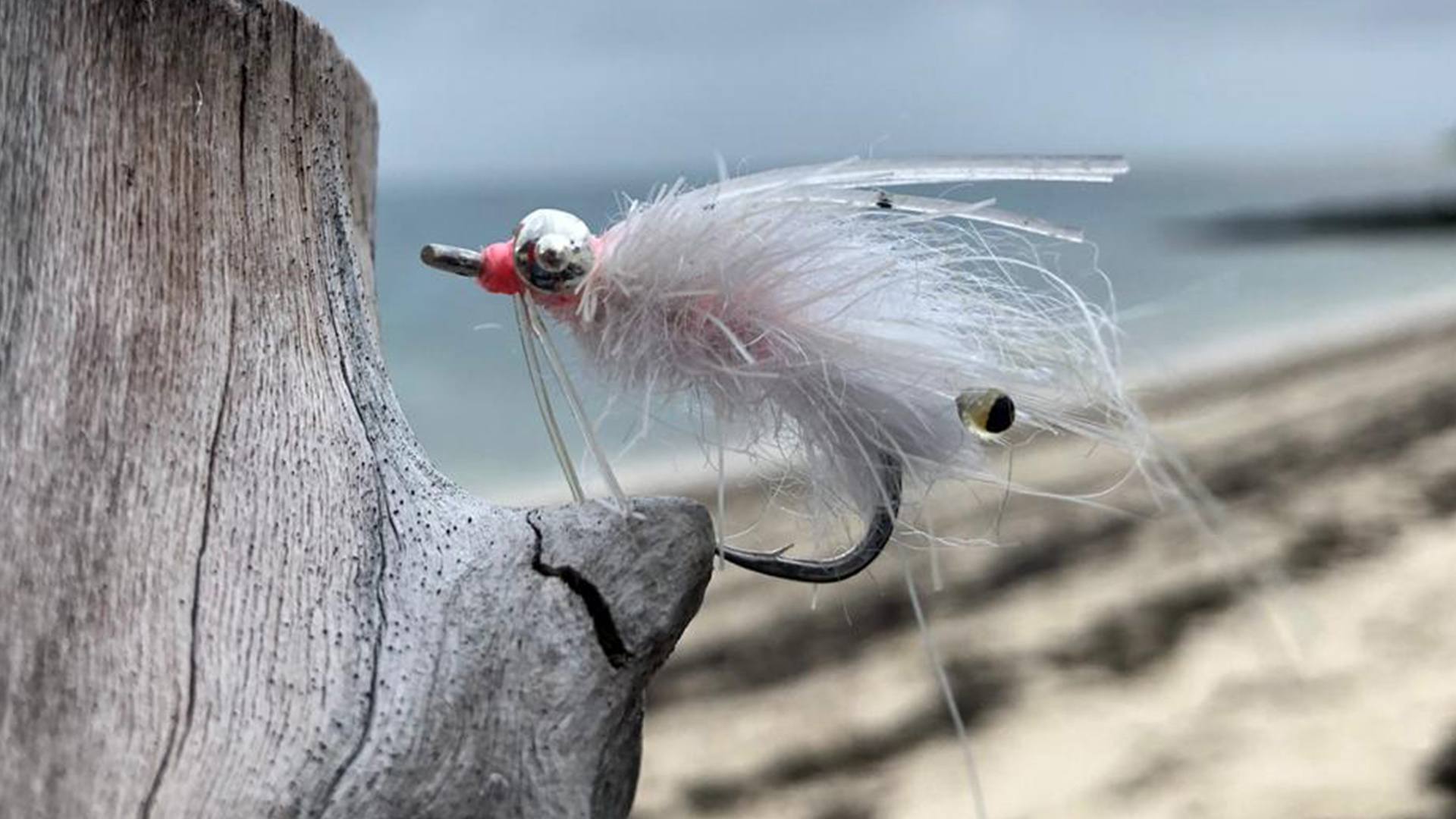
Kraken Crab Fly
The Kraken Crab Fly doesn’t imitate a specific creature but rather an array of different crustaceans found in and around turtle grass, coral patches, and white sand. Common colours are olive, dark brown, tan, and white. The rule of thumb is to fish a dark fly over a dark bottom and lighter colours over lighter bottoms.
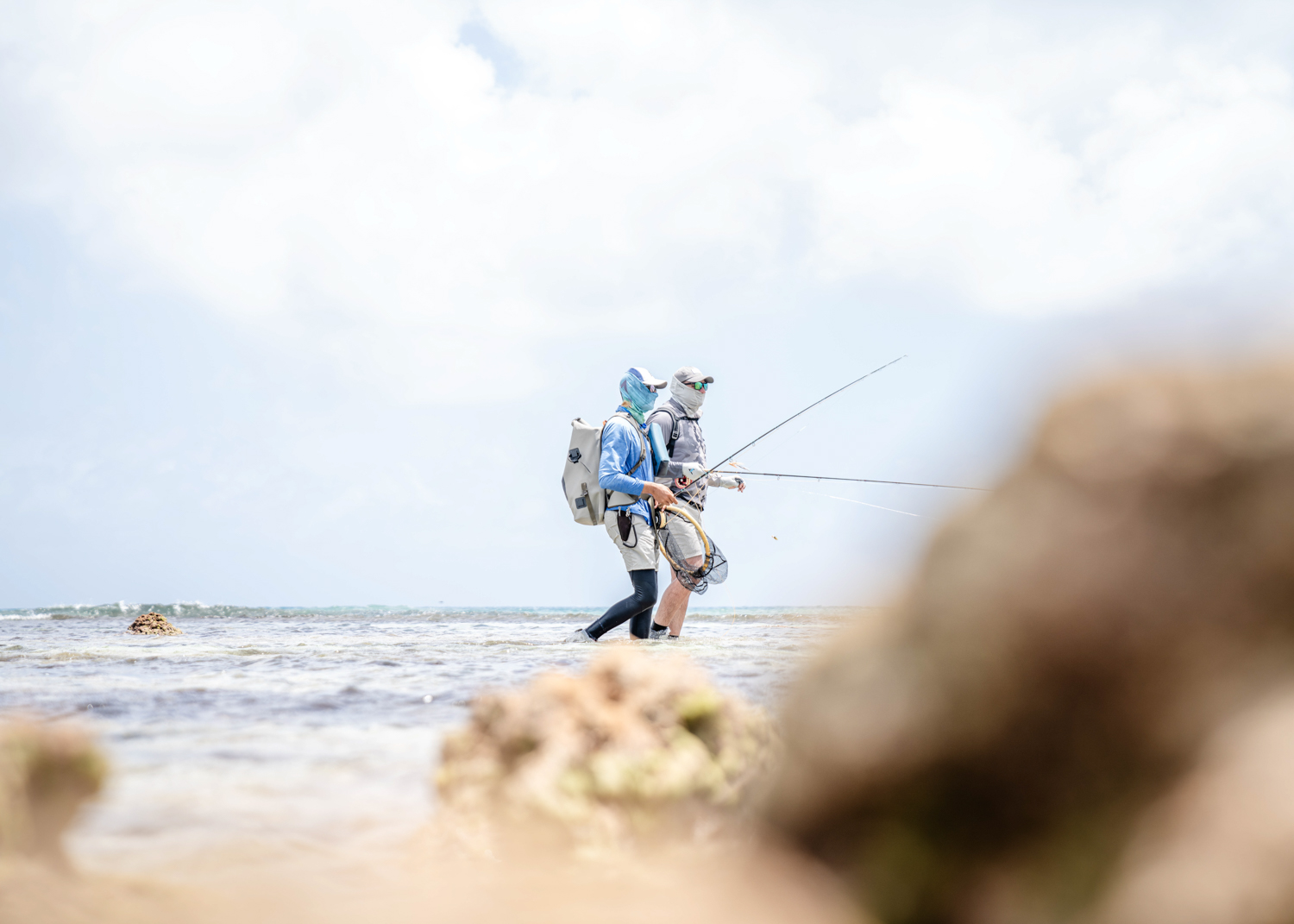
Best Tides For Triggerfish
Triggerfish are not afraid of shallow water. This makes them extremely desirable to fly fishermen, and the allure of targeting feeding and tailing fish is very appealing. Accordingly, the best tides to target triggers are around the low tide cycle.
Targeting triggers directly over the Neap Tide cycle can be tricky as the water level will not be low enough, whilst the opposite will happen during the Spring Tide cycle as the water will drop too quickly off the flats and race back on when the tide turns, making your window of opportunity to target them very short.
The best time would therefore be two to three days before or after Spring Tide.
MAKING THE CATCH
Triggerfish are notoriously skittish, partly because they feed in such shallow water. All of this makes approaching them quite challenging and extremely frustrating at times.
There are three things you need to catch one of these:
A Stealthy, Quiet Approach: You know your casting capabilities, if you can reach, stop and make the cast. Getting unnecessarily close will most likely spook off the fish.
Make Your First Cast Count: Presenting too close will frighten the fish. Presenting too far away will result in the fish not seeing the fly. An accurate, aggressive cast is required.
A Bucket Load of Luck: Following all the rules, doesn’t guarantee you a trigger. They can be incredibly tricky at times, hence the nickname ‘Tricky Triggers’!
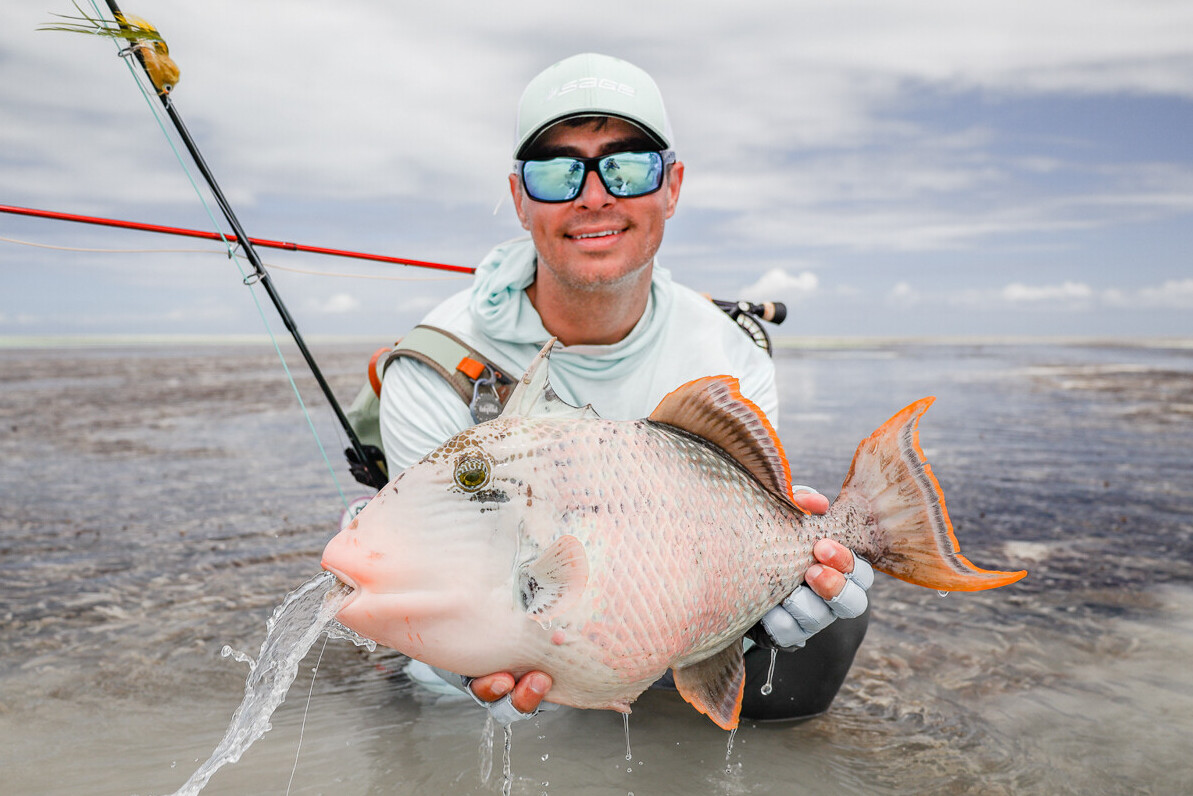
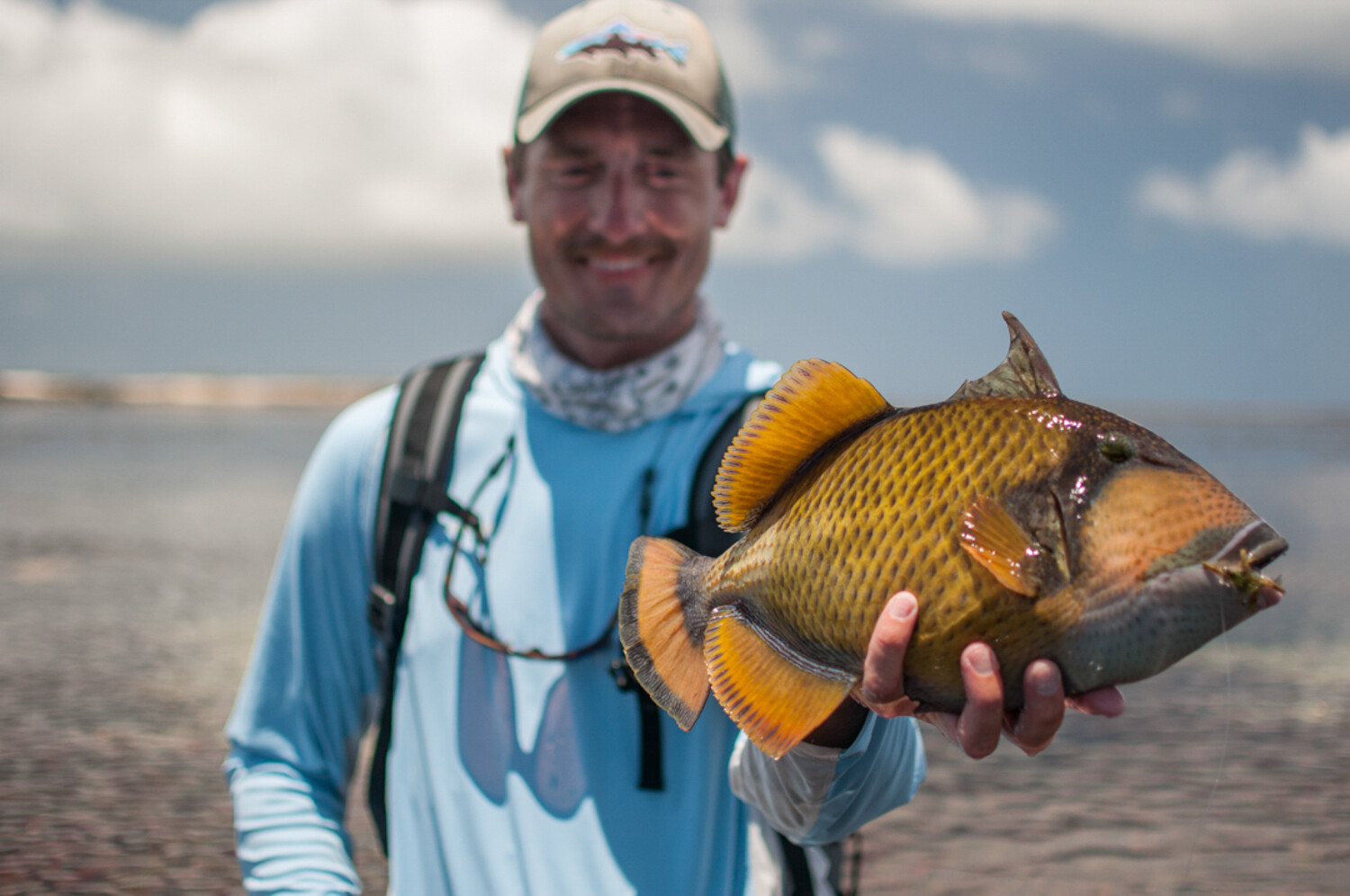
Triggerfish Caught on a Fly
Some of the beauties caught at Alphonse Fishing Co destinations.
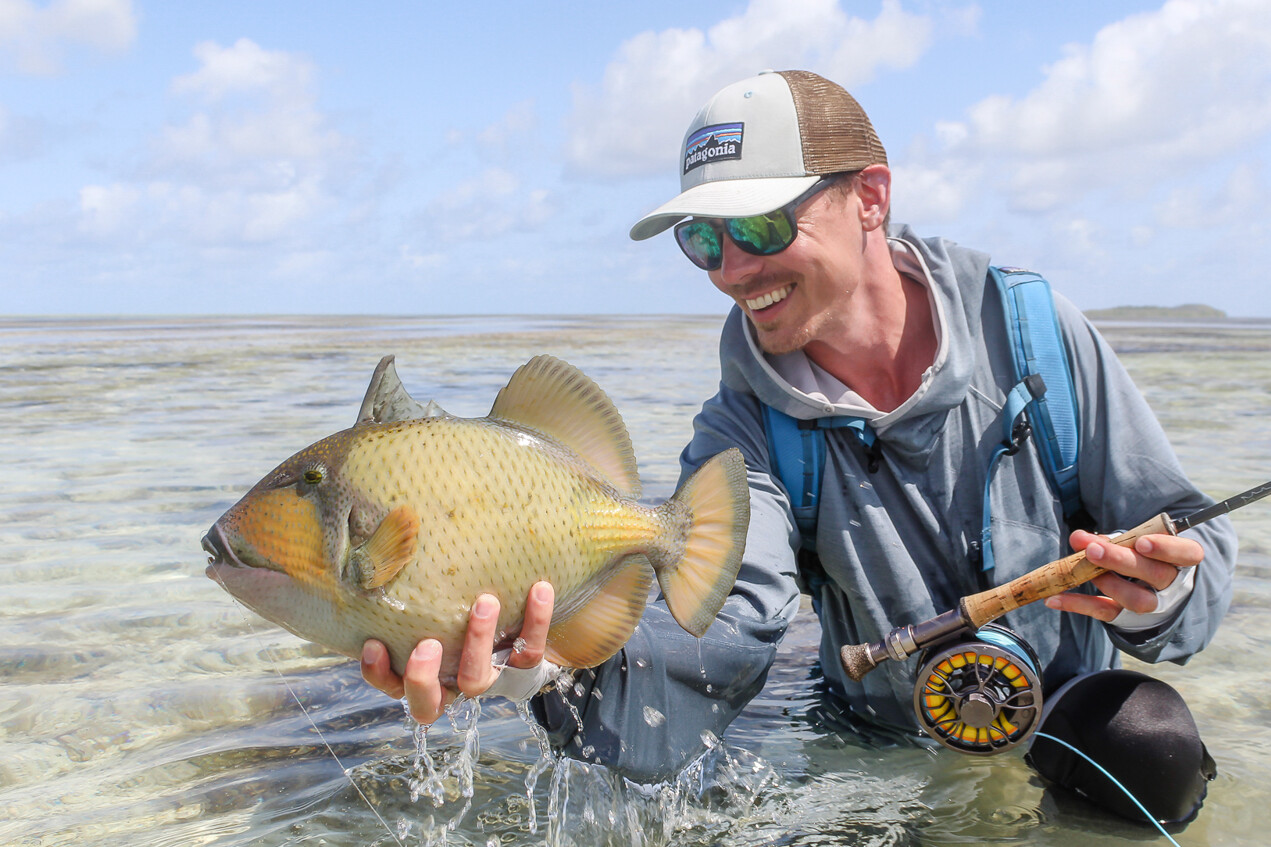
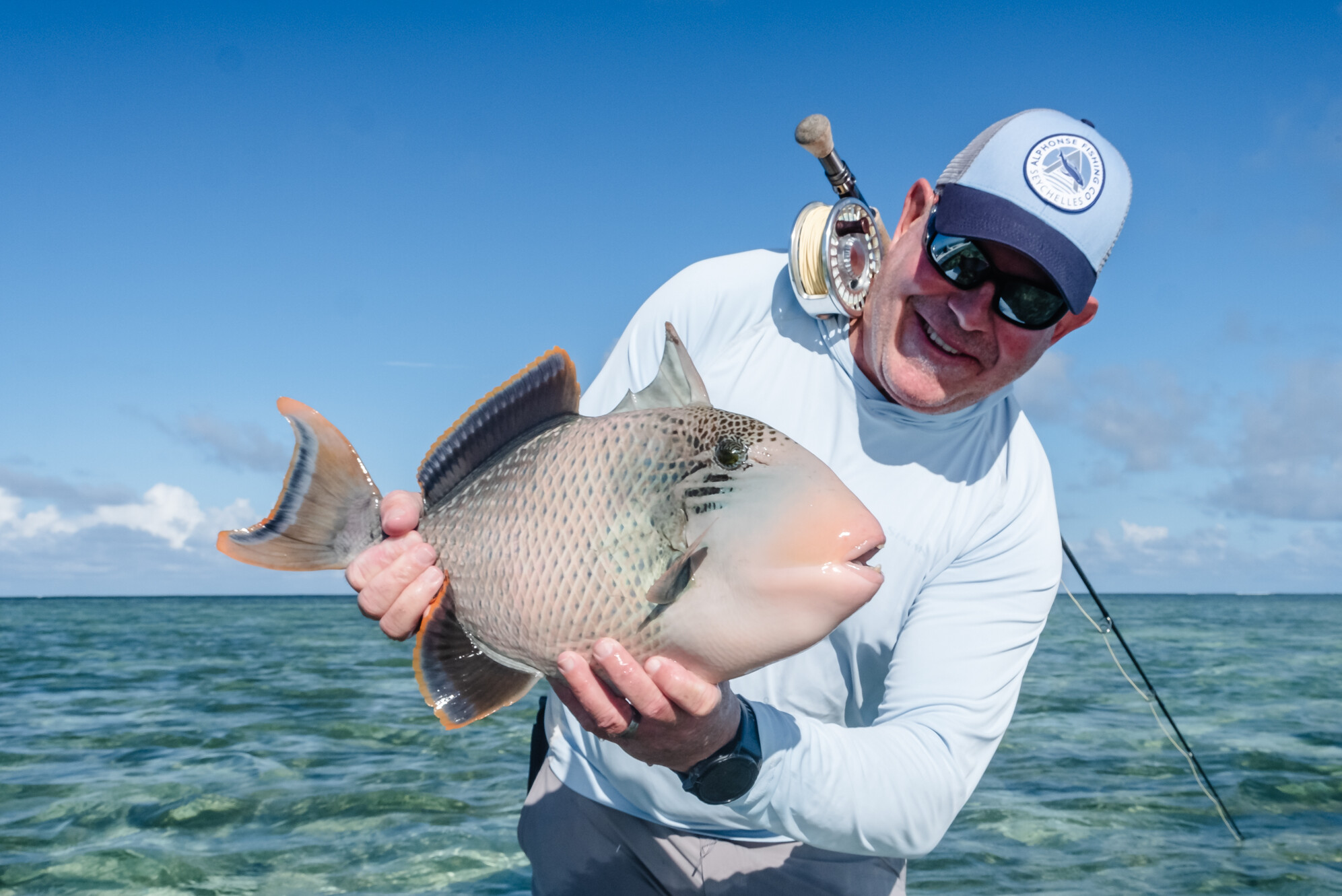
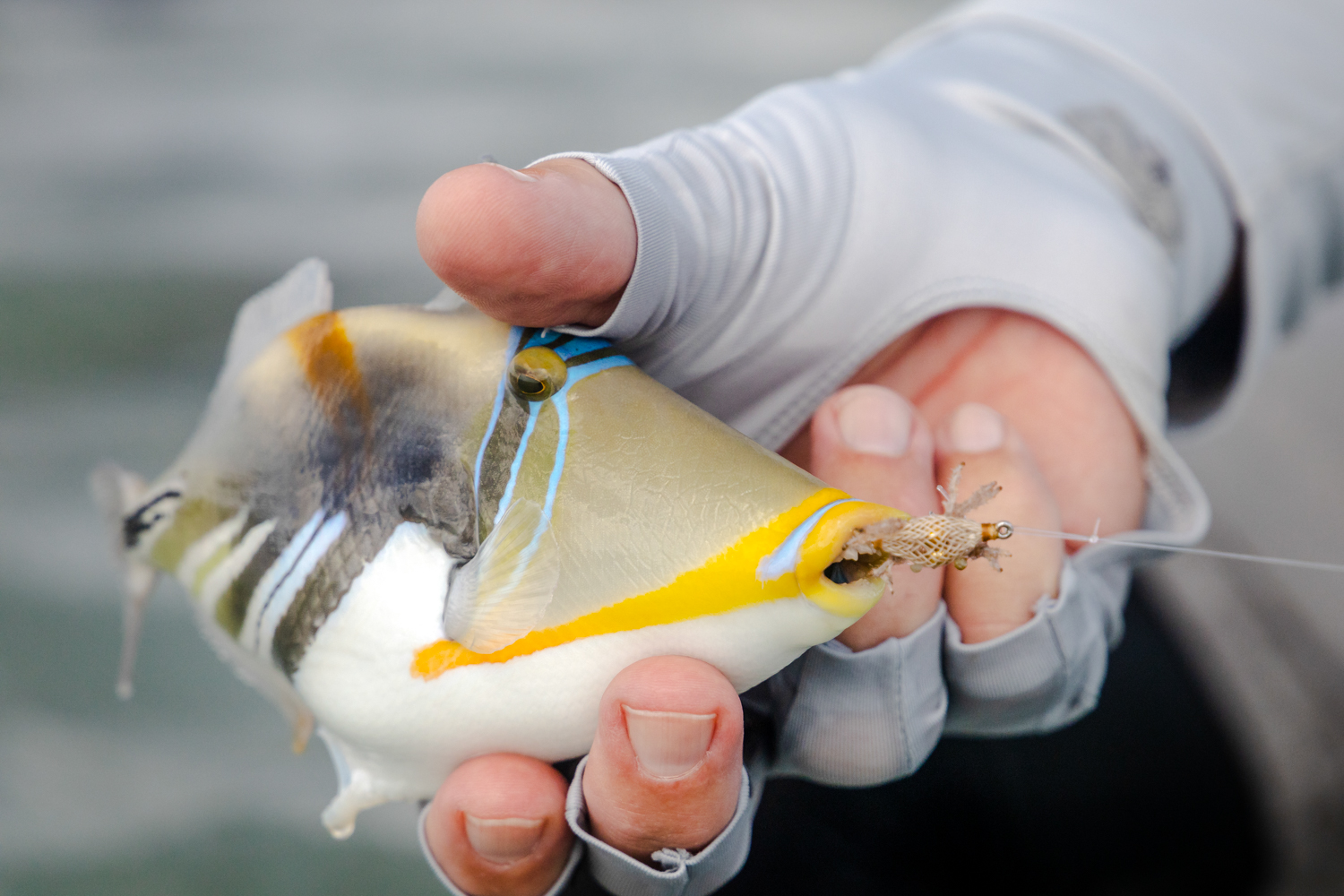
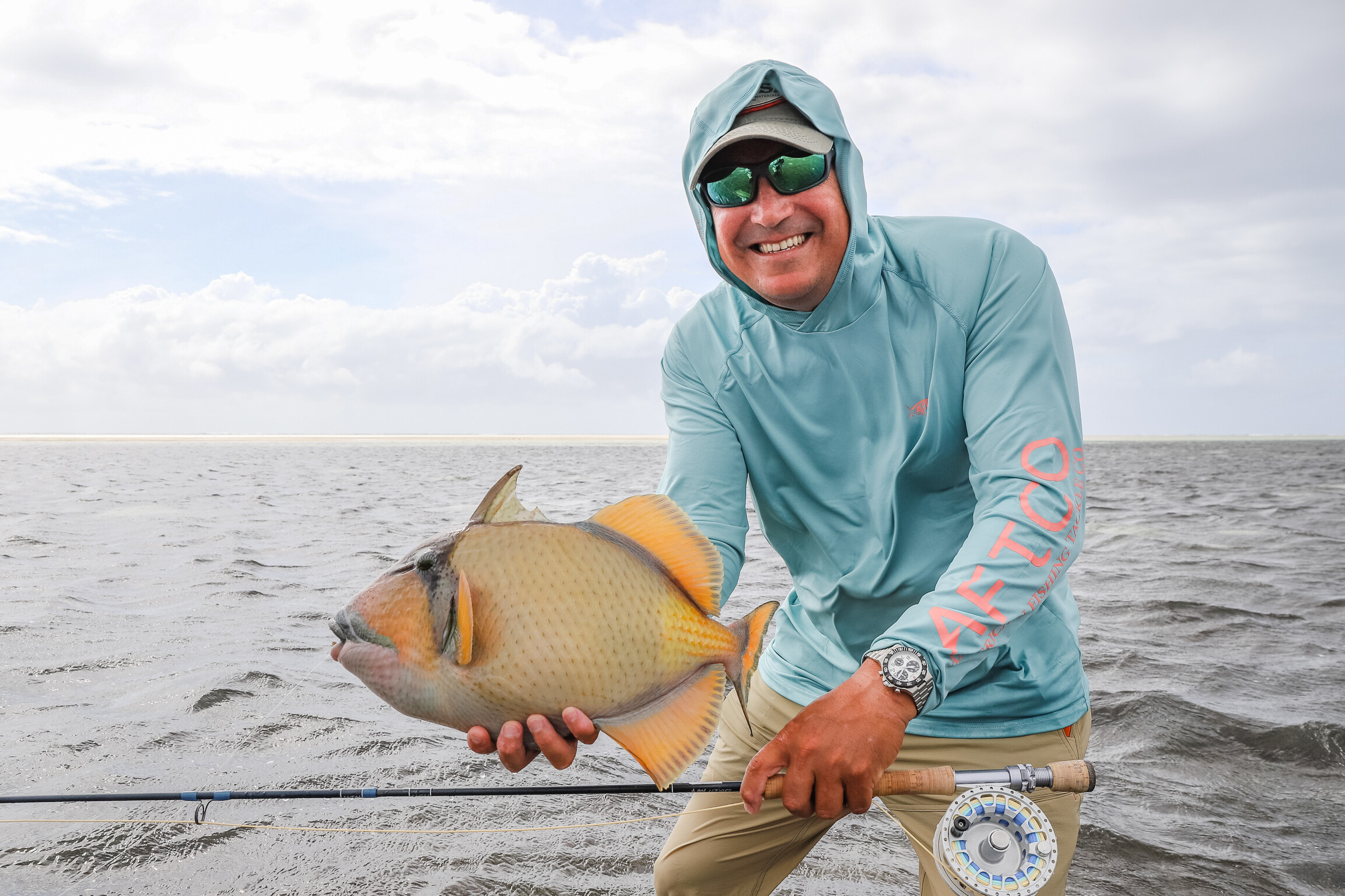
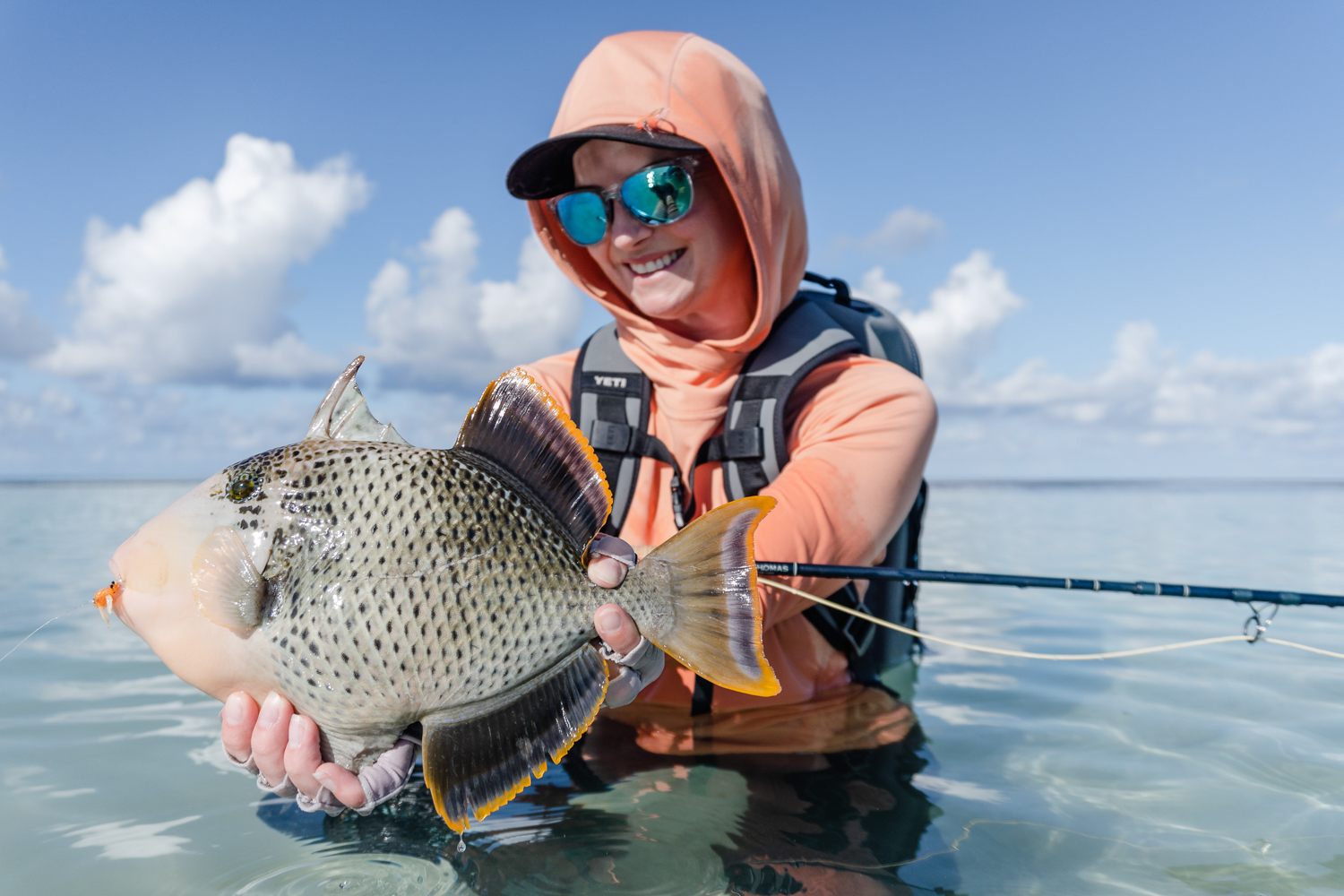
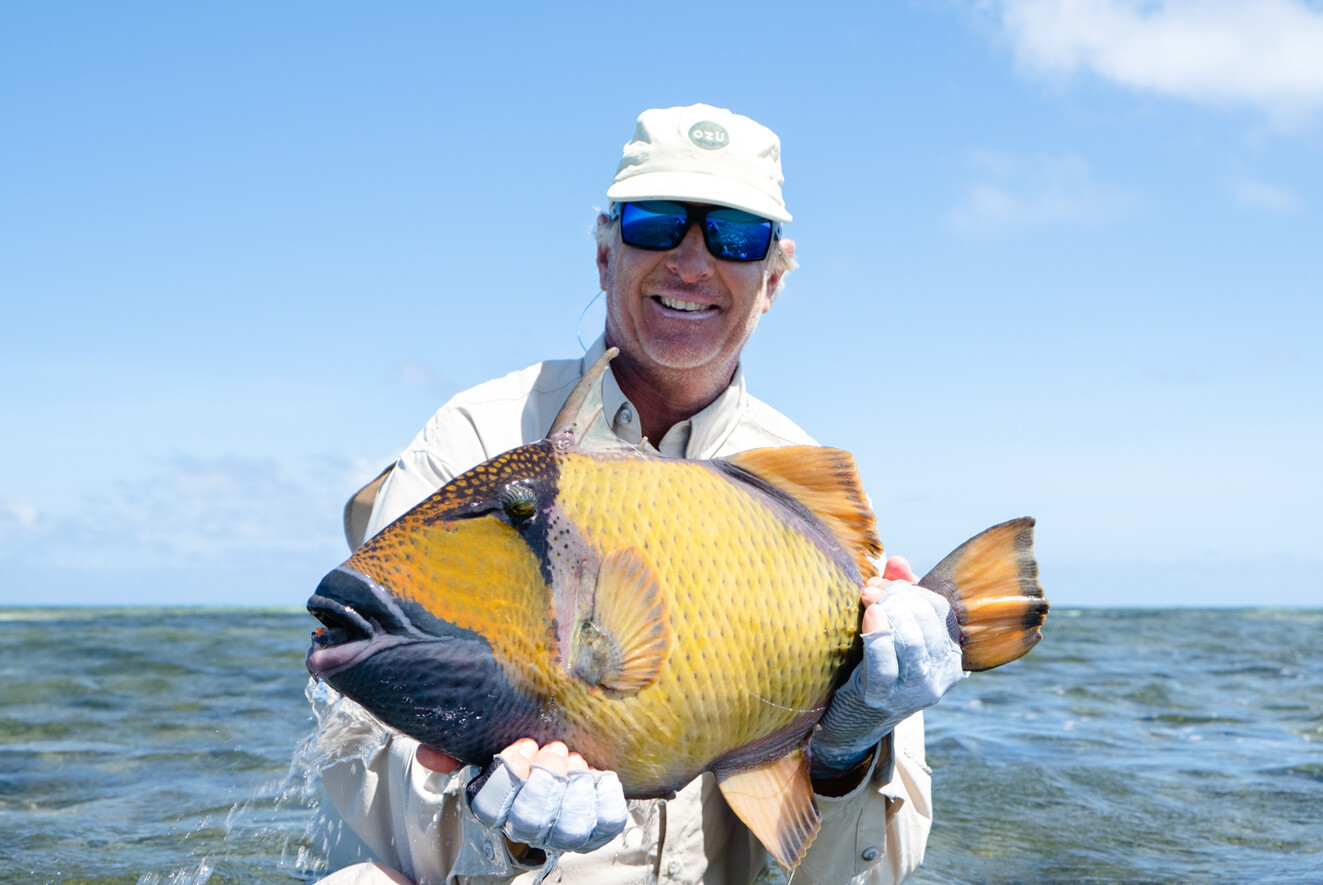
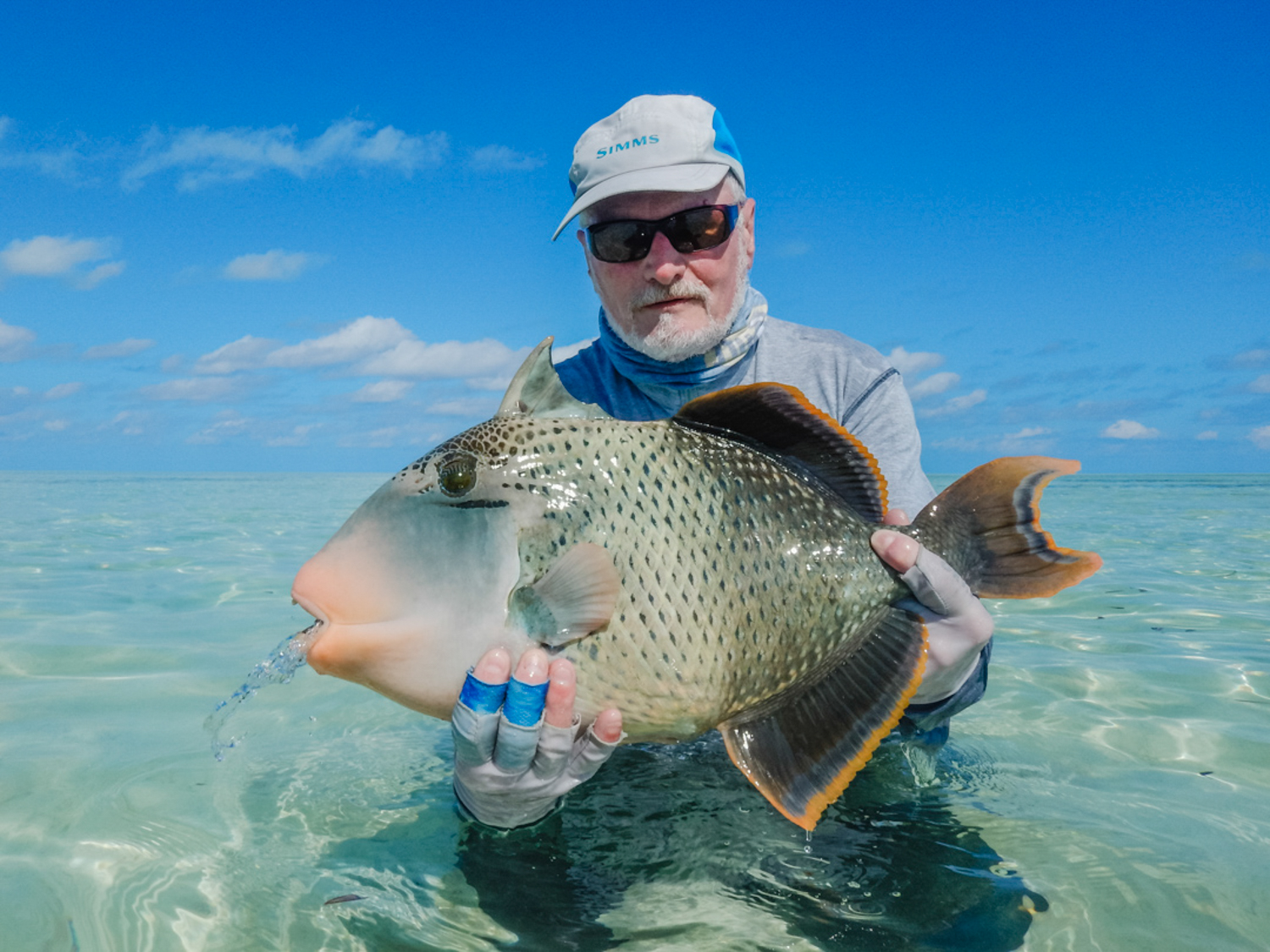
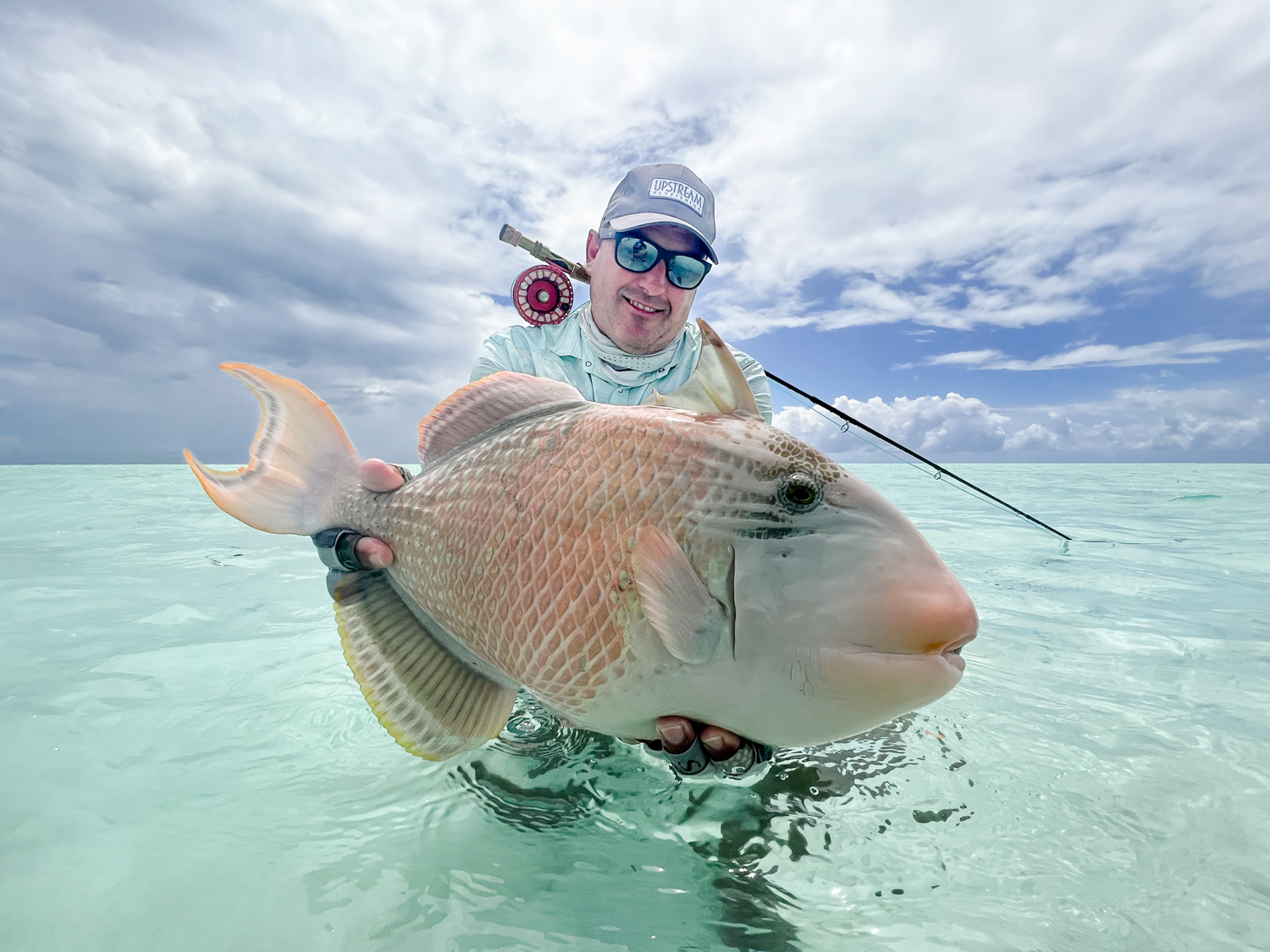
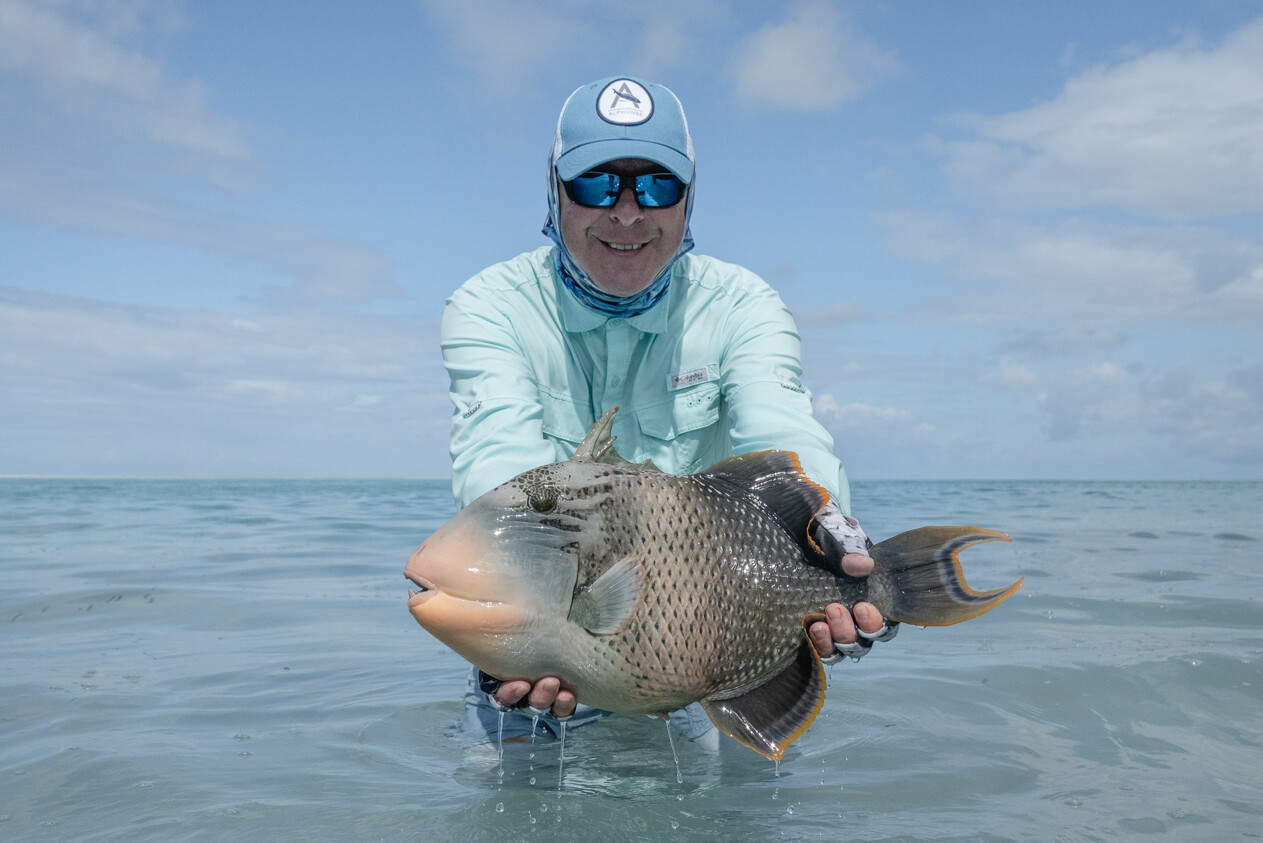
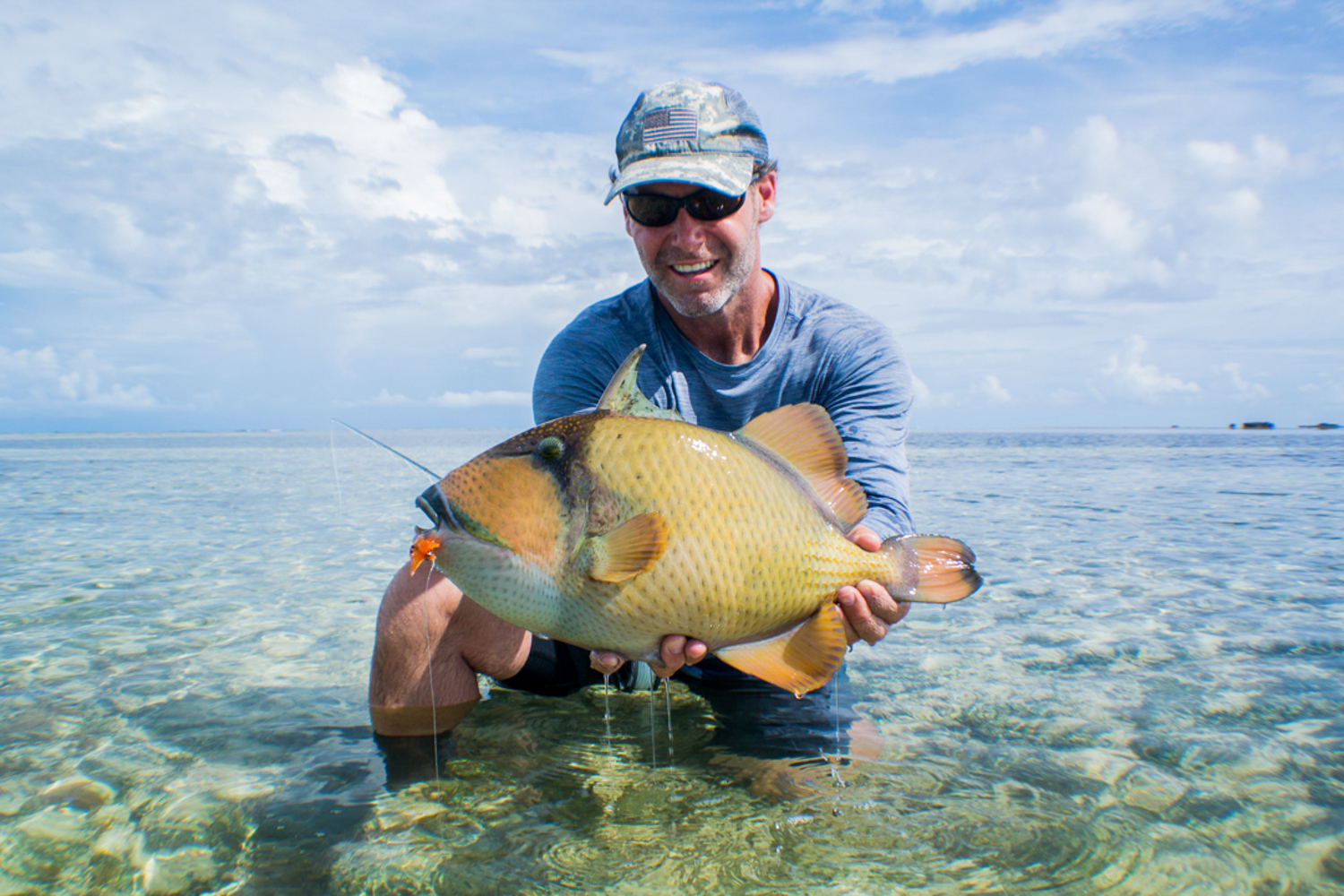
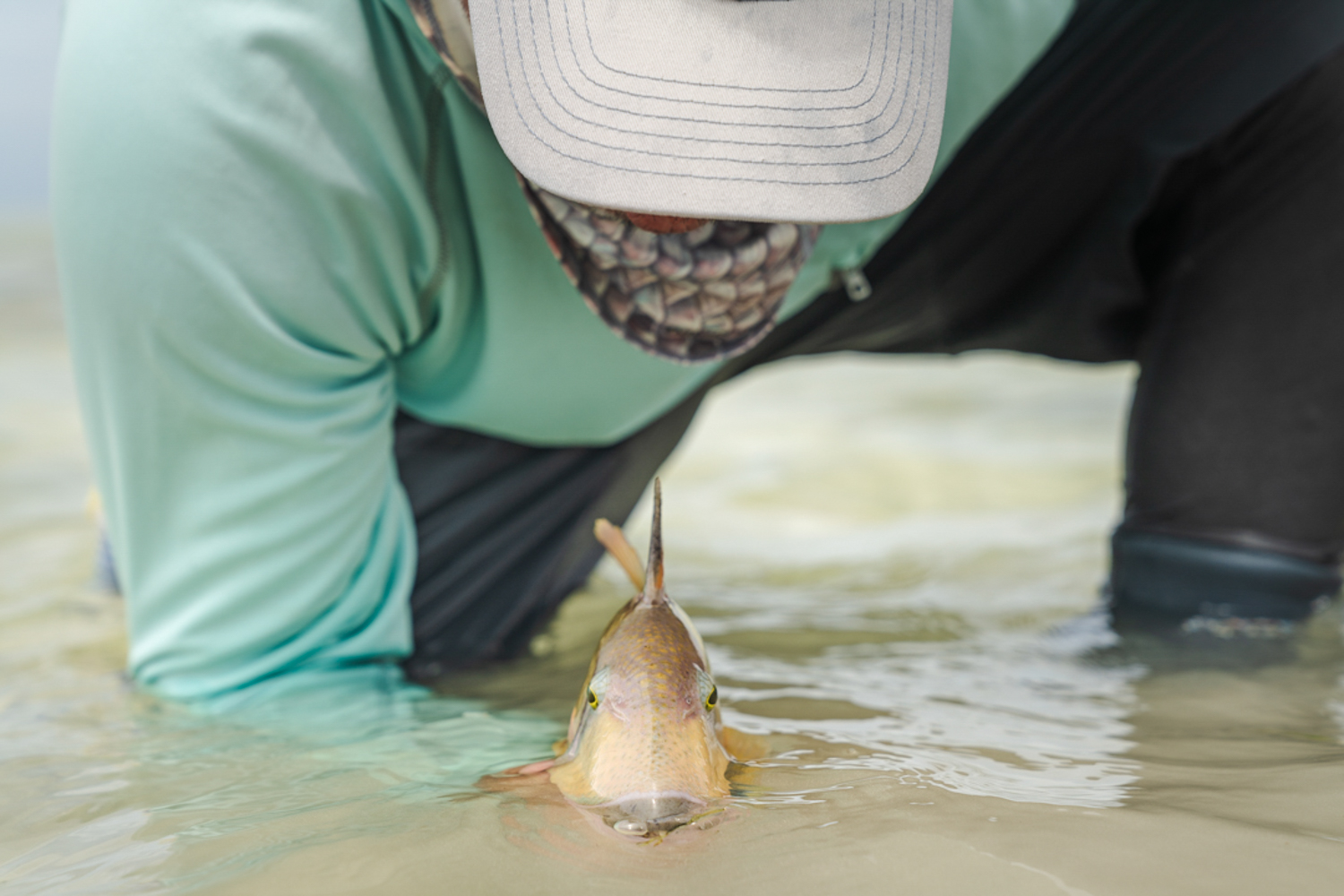
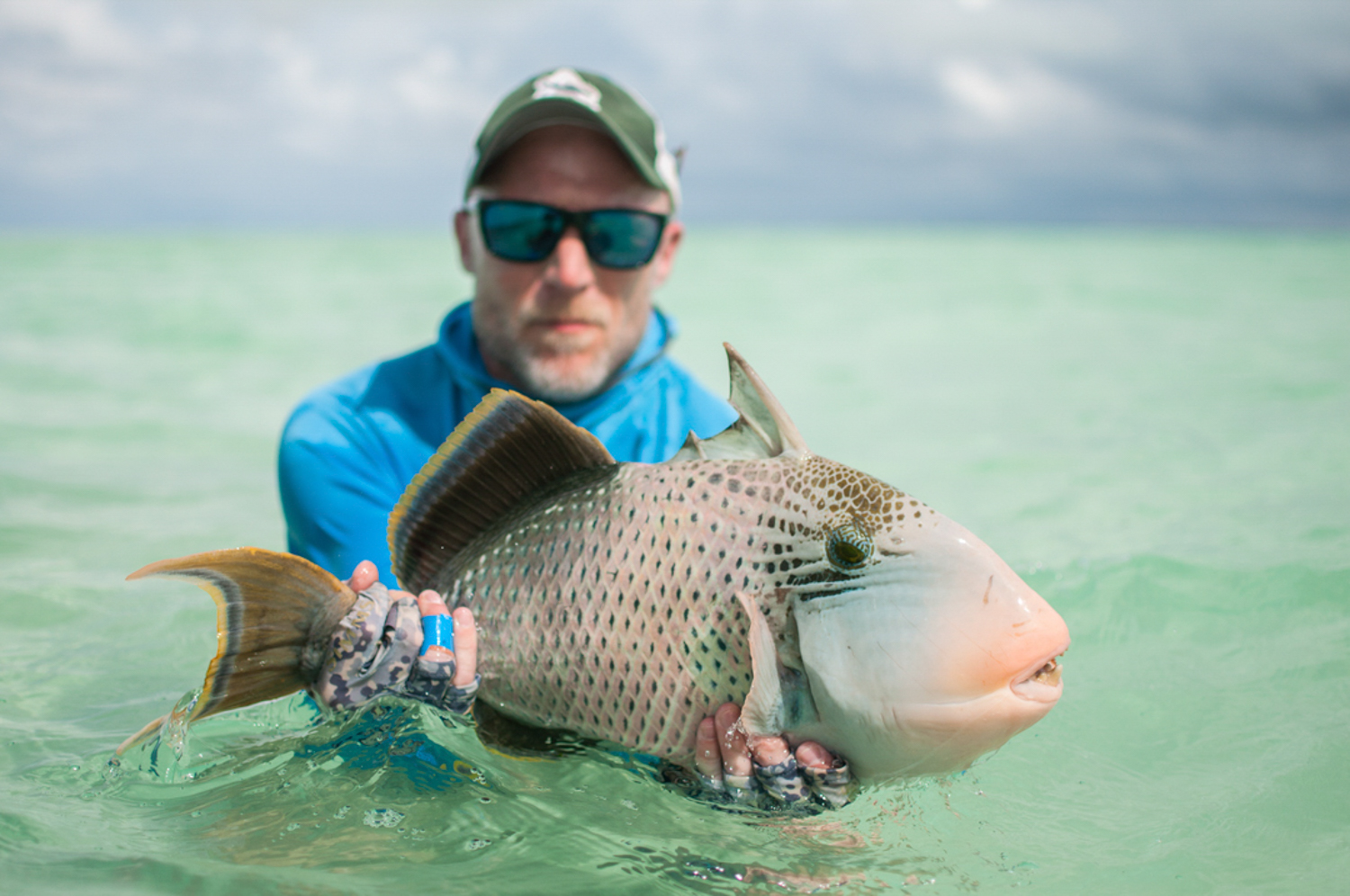
Latest Fly Fishing Reports
-
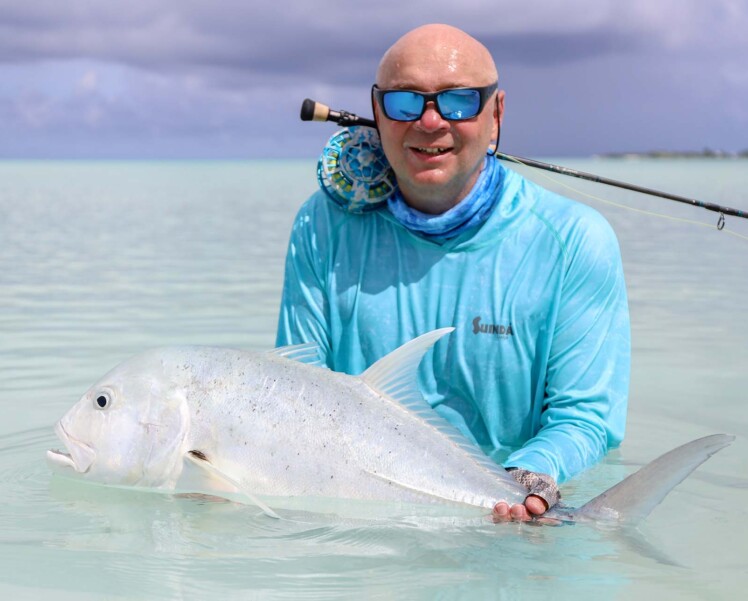
FARQUHAR ATOLL FLY FISHING REPORT (06 – 13 MAR 2024)
Read More -
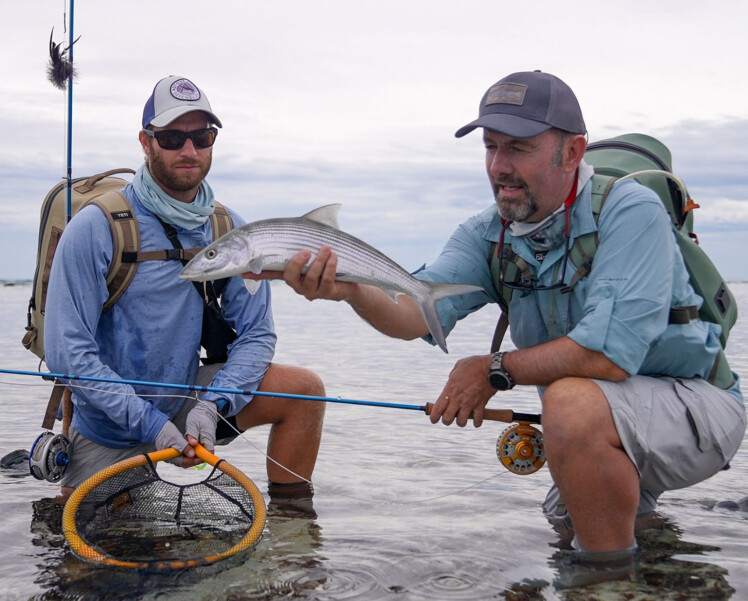
ASTOVE ATOLL FLY FISHING REPORT (26 FEB – 04 MAR 2024)
Read More -
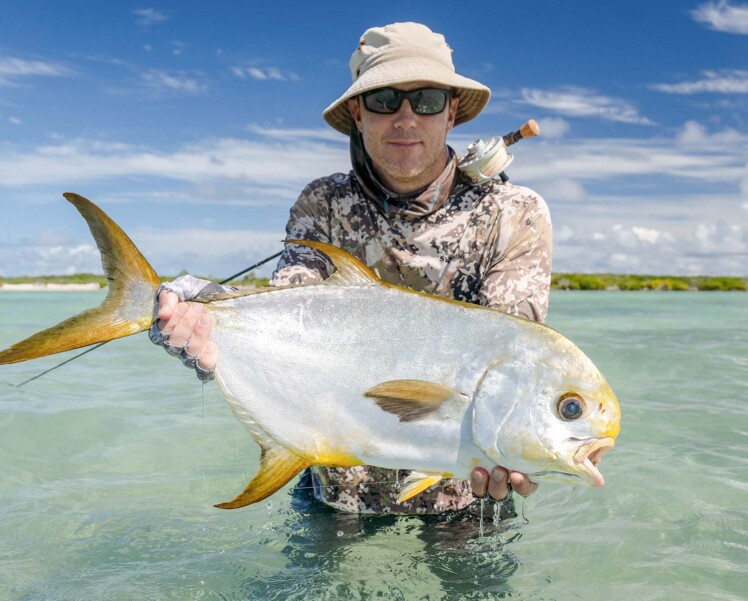
COSMOLEDO ATOLL FLY FISHING REPORT (29 FEB – 07 MAR 2024)
Read More

